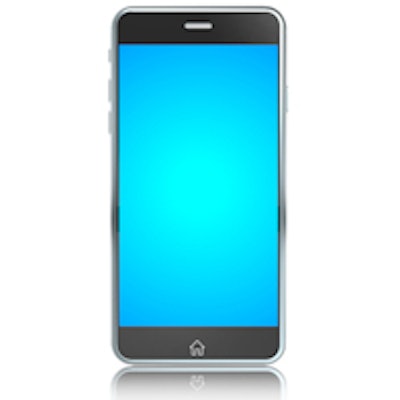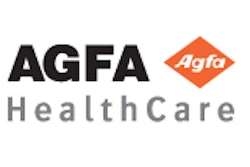
Cardiovascular emergencies such as acute aortic syndromes need to be diagnosed quickly. Fortunately, mobile devices such as the iPhone can be used for on-the-go diagnosis and triage of patients with these life-threatening conditions, according to an article published online August 3 in the Journal of Cardiovascular Computed Tomography.
In a study involving more than 100 cases of suspected acute aortic syndromes, a multidisciplinary team from the Cleveland Clinic found that Apple's iPhone 5 yielded high levels of sensitivity and specificity, compared with interpretations on conventional PACS workstations and with the final patient diagnosis at discharge.
"If properly and securely implemented, sharing imaging studies using the 'cloud' in conjunction with reviewing studies on a handheld device (if no dedicated workstation is immediately available) will allow for fast transfer of imaging studies, avoiding delayed diagnosis and treatment," wrote lead author Dr. Ralph Matar and colleagues. "In patients treated within clinical networks, this will facilitate appropriate triage."
Need for speed
With lives on the line in cardiovascular emergencies, it's critical to have rapid interpretations of CT angiography (CTA) studies. The researchers sought to assess the diagnostic utility of a mobile device used by experienced cardiovascular imaging specialists for offsite diagnosis of acute aortic syndromes. To do this, they studied 104 consecutive patients who had received CTA studies for suspected acute aortic syndromes during on-call hours between January 2013 and August 2014.
Blinded to each other's interpretations, two subspecialized cardiovascular imaging physicians used Xero image viewing software (Agfa HealthCare) running on an iPhone 5 to assess the exams. Reader A had 13 years of cardiovascular and thoracic imaging experience, while reader B had eight years of experience. Their interpretations were then compared with the subsequent reads performed by other cardiovascular imaging specialists on dedicated stationary PACS workstations, as well as the patient's diagnosis at discharge.
Cardiovascular and thoracic emergencies were defined according to department guidelines for findings that trigger critical results pathways. Such emergencies included aortic dissection, aortic rupture, leaking aortic aneurysm, cardiac tamponade, large pulmonary embolus, and pneumothorax. Of the 104 CT angiography studies, 27 were positive for an acute abnormality, and 22 of these had acute aortic dissection. Two patients had a contained aortic rupture and three patients had a pulmonary embolism.
The researchers estimated sensitivity by calculating the proportion of true positives among patients with an acute abnormality, while specificity was estimated as the proportion of true negatives among patients who didn't have an acute abnormality.
| Reader accuracy using iPhone 5 | ||
| Measure | Reader A | Reader B |
| Sensitivity | 26/27 (96.3%) | 23/27 (85.2%) |
| Specificity | 77/77 (100%) | 75/76 (98.6%) |
Reader B missed four acute cases, including a missed submassive pulmonary embolism that was also missed by reader A.
| Sensitivity by abnormality type | ||
| Abnormality | Reader A | Reader B |
| Pulmonary embolism | 2/3 (66.7%) | 2/3 (66.7%) |
| Aortic dissection type A | 7/7 (100%) | 7/7 (100%) |
| Aortic dissection type B | 13/13 (100%) | 12/13 (92.3%) |
| Abdominal aortic dissection | 2/2 (100%) | 1/2 (50%) |
| Contained aortic rupture | 2/2 (100%) | 1/2 (50%) |
The results demonstrate that mobile image access can feasibly be used for on-call triage of patients being evaluated for suspected acute aortic syndromes, according to Matar and colleagues. They acknowledged, however, that while diagnostic accuracy was good, it did not reach the accuracy level of a dedicated stationary workstation. Furthermore, there were differences between observers.
Remote consultation
As most patients with cardiovascular emergencies present to community hospitals, it's important to have a prompt diagnosis to ensure timely transfer to tertiary care centers, the group noted.
"However, in-house 24/7 expertise to interpret complex imaging studies is often lacking outside of specialized centers," the authors wrote. "Reliable, mobile access with handheld devices to a central PACS allows consultation of experienced cardiovascular imaging specialists and remote communication with the team of medical professionals involved in the care of these patients."
Implementing mobile image access within a larger acute aortic syndromes network could have a significant effect, "in particular if remote image upload into the central PACS server will eventually replace the currently still common means of exchanging imaging data between two facilities or healthcare providers on compact disks (CDs)," they wrote.



















